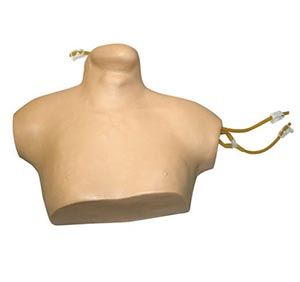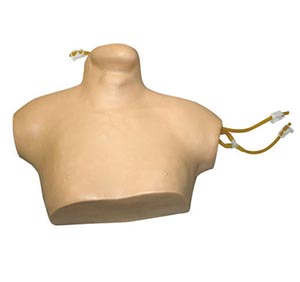ADA MED SUPPLY LIMITED
Phone:+86 19937901373
Tel:+86-0379-65160607
Email:adaanatomy@adaanatomy.com


Central venous catheterization is a highly technically demanding medical procedure, often used in emergency and critical care. Due to its difficulty and risk, many doctors and nurses face certain challenges when performing central venous puncture intubation. Can advanced teaching models, such as central venous catheterization models, effectively help reduce the risk of failure in these procedures? Here's an in-depth look at the problem.
1. Provide a realistic operating environment
The central venipuncture intubation model provides a near-real operating environment through highly simulated anatomical simulation. The model accurately reproduces the position and texture of veins, arteries, and other clinically relevant structures, allowing participants to receive emotional feedback similar to real clinical practice. This feedback not only helps students sense the depth and Angle of the piercing, but also allows them to learn to cope and adjust in the face of complex anatomical variations.

Central venous puncture intubation model
2. Repeated practice and skill consolidation
Through repeated practice, students are able to master the correct piercing technique on the model. Based on the repeatability of the operation, students can better adjust their mode of operation, thereby reducing the risk of failure due to improper operation. Repeated practice helps students to be more confident and skilled in actual operation, and improves the success rate.
3. Real-time feedback and data support
Many central venipuncture intubation models are equipped with data acquisition systems that monitor and record the student's operation in real time. These data help students to clarify their accuracy and time control during piercing, and point out weaknesses in the operation in a timely manner. For example, whether the Angle of intubation is correct, whether the depth of puncture is too deep or too shallow, etc. Students make adjustments based on these data to effectively improve the accuracy of the operation and reduce the risk of intubation failure.
4. Simulate clinical complex situations
The central venipuncture intubation model can not only simulate the routine puncture operation, but also simulate some complex clinical conditions, such as varicose veins, local swelling, etc., which are often one of the causes of clinical failure. By practicing these challenges in simulation models, students can better handle these complex problems in practice, thus reducing the chance of failure.
Data support:
One study showed that trainees trained using the central venipuncture model improved their success rate in clinical practice by about 25%. In addition, the trainees were able to significantly reduce the number of puncture failures through simulation training, especially in the first operation, the success rate increased by 15-20%.
The Central venipuncture intubation model helps students master puncture techniques by providing a safe and realistic training platform. Its simulation, real-time feedback, data support, and reproduction of complex clinical situations reduce the risk of intubation failure. For medical professionals, training with this teaching model can not only improve operational skills, but also enhance the ability to respond to complex emergency situations.